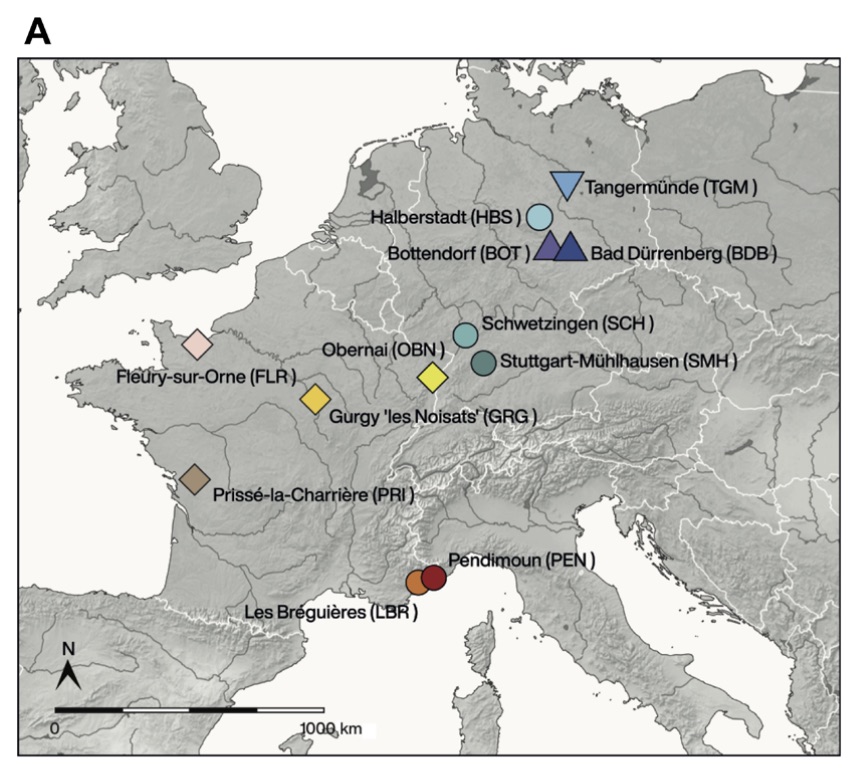Rivollat et al. 2020

Authors: Maïté Rivollat, Choongwon Jeong, Stephan Schiffels, İşil Küçükkalıpçı, Marie-Hélène Pemonge, Adam Benjamin Rohrlach, Kurt W Alt, Didier Binder, Susanne Friederich, Emmanuel Ghesquière, Detlef Gronenborn, Luc Laporte, Philippe Lefranc, Harald Meller, Hélène Réveillas, Eva Rosenstock, Stéphane Rottier, Chris Scarre, Ludovic Soler, Joachim Wahl, Johannes Krause, Marie-France Deguilloux and Wolfgang Haak
Abstract: Starting from 12,000 years ago in the Middle East, the Neolithic lifestyle spread across Europe via separate continental and Mediterranean routes. Genomes from early European farmers have shown a clear Near Eastern/Anatolian genetic affinity with limited contribution from hunter-gatherers. However, no genomic data are available from modern-day France, where both routes converged, as evidenced by a mosaic cultural pattern. Here, we present genome-wide data from 101 individuals from 12 sites covering today's France and Germany from the Mesolithic (N = 3) to the Neolithic (N = 98) (7000–3000 BCE). Using the genetic substructure observed in European hunter-gatherers, we characterize diverse patterns of admixture in different regions, consistent with both routes of expansion. Early western European farmers show a higher proportion of distinctly western hunter-gatherer ancestry compared to central/southeastern farmers. Our data highlight the complexity of the biological interactions during the Neolithic expansion by revealing major regional variations.